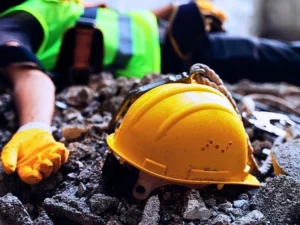Exposure to ototoxic chemicals found in a number of solvents, varnishes and other products common at worksites can cause permanent hearing loss regardless of whether noise exposure exists.

What Chemicals are Ototoxicants?
Chemicals that can damage nerve fibers and tiny hairs within the ear are ototoxicants. These chemicals enter the bloodstream and body by getting absorbed through the skin, inhaled or ingested in vapor, gas, or mist form. When damage occurs, the affected person may experience ringing in his or her ears, hearing loss, or problems with balance.
Ototoxicant chemicals that affect hearing or balance can be found in many common products, including those that are used or spilled on construction worksites, factories, or in the home. A few include:
-
- Carbon monoxide from gas-powered vehicles or tools
- Benzene from cleaning agents, paints or plastics
- Carbon disulfide in pesticides
- Xylene found in varnishes, paints, and thinners
- Trichloroethylene in rug cleaners and spot removers
- Styrene used in insulation and plastics
Who is Most at Risk for Hearing Loss?
When combined with exposure to loud noises, the risk of hearing loss from ototoxicants increases. The level of impairment depends on the length of exposure, the noise level and how much chemical the worker was exposed to. Occupations where exposure to both loud noises and ototoxicants is common increases the risk of hearing damage. Workers in the construction, printing, painting, exterminating and firefighting industries are at a higher risk.
There is no treatment for ototoxic hearing loss. Symptoms of ototoxicant exposure are similar to those that occur with exposure to neurotoxins and solvents. They may include dizziness, headache, blurry vision, and a feeling of fullness in the ears. When these symptoms occur, workers should immediately seek fresh air.
Preventing Ototoxicant Exposure
To prevent or limit exposure to ototoxicants, workers must first know they exist in the workplace. OSHA requires employers to provide health and safety information and training to all workers who are exposed to hazardous chemicals, including ototoxicants. Safety Data Sheets (SDS) should be reviewed to determine what chemicals are ototoxic.
When possible, ototoxicants should be replaced with less toxic alternatives. When these hazardous chemicals cannot be replaced, added engineering controls, including improved ventilation should be implemented. Workers should also be supplied with the appropriate PPE, including gloves and other protective clothing to reduce skin exposure.







